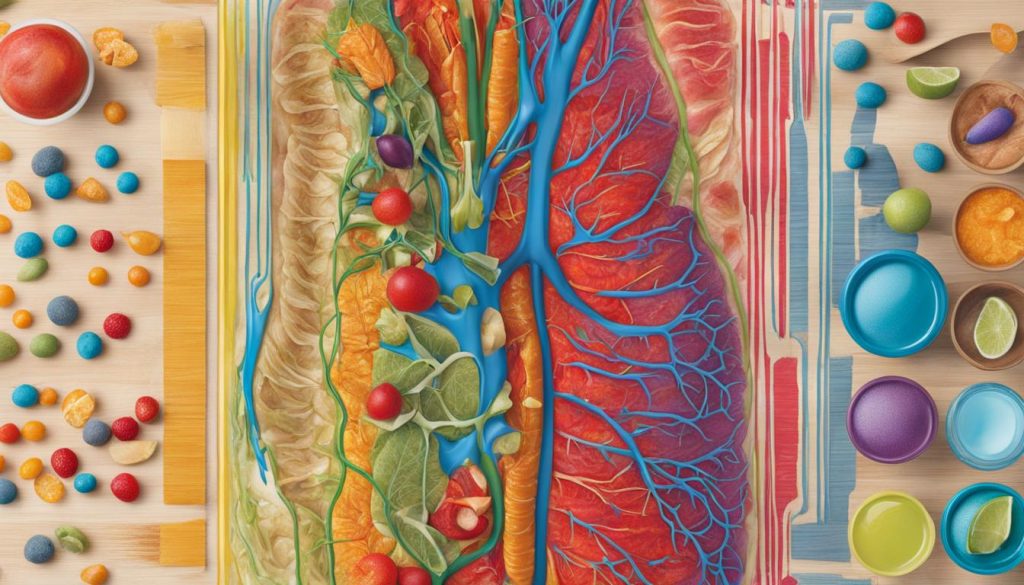Where Are Dietary Fats Absorbed? Quick Facts for Instant Clarity

Greetings! I'm here to shed light on the fascinating process of fat absorption in the human body. Understanding where and how dietary fats are absorbed is essential for comprehending the vital role they play in our overall health.
The digestive system is a complex network responsible for breaking down and extracting nutrients from the food we consume. Among these nutrients, dietary fats, also known as lipids, hold significant importance. They serve as a concentrated source of energy and play a crucial role in various bodily functions.
So, where exactly are these dietary fats absorbed? The answer lies in the small intestine, an integral part of the digestive system. The small intestine consists of three main sections: the duodenum, jejunum, and ileum. However, it is in the jejunum where the majority of fat absorption takes place.
But before reaching the small intestine, the dietary fats undergo a process called emulsification in the stomach. This process involves bile acids breaking down the fats, making them easier to digest. Once in the small intestine, lipases, a group of enzymes, further break down the fats into smaller molecules known as fatty acids and glycerol.
These smaller molecules are then absorbed into the cells lining the small intestine through a process called passive diffusion. Inside the intestinal cells, the fatty acids and glycerol are reassembled into triglycerides, which are the primary form in which fats are transported throughout the body.
The triglycerides are then packaged into small droplets called chylomicrons and released into the lymphatic system. Eventually, they enter the bloodstream, from where they reach various tissues and organs to be utilized for energy or stored for later energy requirements.
Understanding the fat absorption process helps us appreciate the importance of optimizing nutrient absorption for overall well-being. Stay tuned as we delve deeper into the topic.
Key Takeaways
Nutrient absorption is essential for overall health and well-being. Efficient absorption of dietary fats ensures that the body can utilize these important nutrients for energy and other vital functions.
Factors such as age, diet, stress levels, and gut bacteria can affect nutrient absorption. It is important to optimize absorption for optimal health outcomes.
Food labels may not always provide accurate information about nutrient absorption, highlighting the need for mindful eating and a varied diet.
Lifestyle factors such as stress management, exercise, and avoidance of harmful substances can influence nutrient absorption.
Food combining can enhance the absorption of certain nutrients, such as pairing raw or partially cooked vegetables with healthy fats.
Maintaining a healthy gut environment is crucial for proper nutrient absorption, and probiotics can support gut health and optimize nutrient absorption.
Optimizing nutrient absorption can maximize the benefits of vitamins, supplements, and other dietary interventions.

In Short, "Where Are Dietary Fats Absorbed"?
Dietary fats are primarily absorbed in the small intestine, with the majority of absorption occurring in the jejunum. Before reaching the small intestine, the fats undergo emulsification in the stomach, making them easier to digest. In the small intestine, lipases break down the fats into fatty acids and glycerol.
These fatty acids and glycerol are then absorbed into the cells lining the small intestine through a process called passive diffusion. Once inside the intestinal cells, they are reassembled into triglycerides, which are the primary form in which fats are transported in the body.
The triglycerides are packaged into small droplets called chylomicrons and are released into the lymphatic system. Eventually, they enter the bloodstream, where they can be utilized for energy or stored for later use. Nutrient absorption, including fat absorption, is influenced by various factors such as age, diet, stress levels, and gut bacteria.
Optimizing nutrient absorption is crucial for maintaining overall health and well-being. Managing stress, incorporating exercise into your routine, and practicing food combining techniques can support the optimal absorption of nutrients, including dietary fats. Additionally, promoting a healthy gut environment through the use of probiotics can further enhance nutrient absorption.